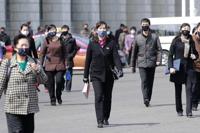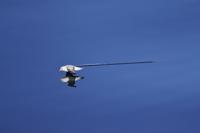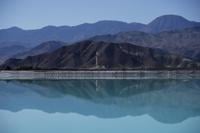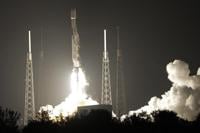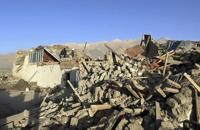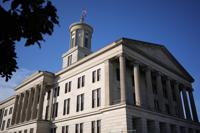SEOUL, South Korea (AP) — North Korea is putting surveillance cameras in schools and workplaces and collecting fingerprints, photographs and other biometric information from its citizens in a technology-driven push to monitor its population even more closely, a report said Tuesday.
The state's growing use of digital surveillance tools, which combine equipment imported from China with domestically developed software, threatens to erase many of the small spaces North Koreans have left to engage in private business activities, access foreign media and secretly criticize their government, the researchers wrote.
But the isolated country's digital ambitions have to contend with poor electricity supplies and low network connectivity. Those challenges, and a history of reliance on human methods of spying on its citizens, mean that digital surveillance isn't yet as pervasive as in according to the report, published by the North Korea-focused .
The study’s findings align with widely held views that North Korean leader Kim Jong Un is stepping up efforts to and promote loyalty to his regime.
These efforts were boosted by the COVID-19 pandemic, during which the North imposed that were maintained for three years before a cautious reopening in 2023.
New laws and recent reports of harsher punishments suggest that the government is cracking down on foreign influence and imported media, likely helped by fences and electronic monitoring systems installed on the border with China during the pandemic.
“Having seen that it’s possible to close the border this tightly, I think they are now keen to keep it that way,” said Martyn Williams, an analyst who co-authored the study with Natalia Slavney.
“In terms of broader surveillance across the country, the pandemic could have played a part, but I think a much bigger role has been played by the fast-reducing cost of surveillance equipment,” Williams said.
The report examined North Korean surveillance technologies through information gained from domestic and international media coverage and publicly announced research at North Korean universities and state organizations. The researchers also said they interviewed 40 North Korean escapees about the surveillance they experienced when they lived in the country and, through unspecified partners, surveyed 100 current North Korean residents in 2023 via phone, text messages and other forms of encrypted communication to ensure their safety.
State media reports show that video surveillance is becoming more common at schools, workplaces and airports. The cameras are mostly sourced from Chinese vendors and range from basic video feeds to more advanced models that include features like face recognition.
Experts have warned that China is that powers its AI-powered surveillance to countries around the world.
North Korean state media reports show that cameras now appear in most schools in the capital, Pyongyang, and other major cities, allowing school staff to remotely monitor what’s happening in classrooms by panning and zooming to focus on individual students or teachers.
Cameras are also widespread in factories, government buildings and other workplaces, both to improve security and to prevent theft, while facial recognition systems have been used to record visitors at Pyongyang’s Sunan airport since 2019.
North Korea has also been expanding its network of traffic cameras beyond Pyongyang since 2021, installing them at major roads heading into and out of the city, likely for the purpose of automatically recording license plates, the report said.
The government may not yet be fully able to utilize the data it collects, and it currently doesn’t have an intensive network of security cameras in streets and residential areas, possibly due to electricity shortages and the large number of security agents already monitoring public life in Pyongyang and elsewhere.
But North Korea does appear to be envisioning a future of more pervasive video surveillance — North Korean universities and research institutions for years have focused on developing technologies related to movement detection and facial and license plate recognition, according to the report.
Meanwhile, the state is also building detailed biometric profiles of its citizens. The latest version of North Korean national identification cards comes in a smartcard format and requires citizens to provide fingerprints, facial photographs and, at least according to one report, to take a blood test.
“For North Koreans, the spread of CCTV means even greater surveillance of their lives, especially if the cameras include automatic detection systems. If such cameras become more broadly used, citizens involved in illicit activities would be especially at risk as facial detection could track their movements throughout cities,” Williams and Slavney wrote.
“At present, North Koreans who get caught in activities such as smuggling or distributing illegally imported goods and foreign content can bribe local security services, but, unlike humans, security cameras cannot be bribed,” they said.
Williams said the government will push to expand its surveillance network beyond major cities as infrastructure improves. It still won't be easy to make use of vast amounts of video data, he said, but North Korea can draw lessons from the surveillance state next door.
“Perhaps the biggest hurdle is the computing infrastructure to process all of this data in real time. Doing so on a national or even provincial level is not an easy task, if the network is to be truly pervasive and consist of multiple cameras,” Williams said. “The country would have to build a small data center and ensure a constant supply of power. I think it definitely can be inspired by China, which is a comparatively freer society in general but has a much more Orwellian digital surveillance network.”


